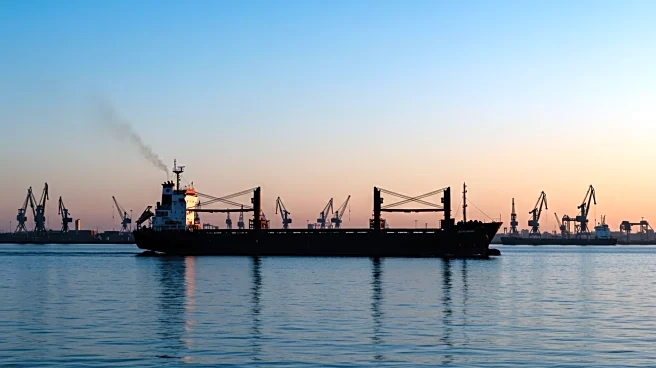What is the story about?
What's Happening?
Limestone shipments across the Great Lakes saw a slight decline in July 2025, totaling 3.53 million tons, which is less than a 1% decrease compared to July 2024. According to the Lake Carriers’ Association, this figure is 6.7% below the five-year average for the month, indicating softer demand from key markets. U.S. quarries supplied 2.88 million tons, marking a 1% drop from the previous year, while Canadian shipments also decreased slightly to 646,418 tons. The year-to-date figures show a more significant downturn, with a 5% decrease compared to 2024, reflecting challenges such as fluctuating construction demand and weather-related delays.
Why It's Important?
Limestone is crucial for the Great Lakes economy, supporting industries like steel manufacturing and construction. The slight decline in shipments suggests stability in short-term demand, but the year-to-date decrease raises concerns about supply chain tightening and shifts in market consumption. This trend could impact economic activities reliant on limestone, potentially affecting job markets and regional economic health. Stakeholders in construction and manufacturing will need to monitor these trends closely to adapt to changing supply dynamics.
What's Next?
As the shipping season progresses into late summer and fall, industry analysts will watch for potential rebounds in limestone demand. If construction and steel production remain steady, carriers might close the year-to-date gap. However, with 2025 tracking below previous years, a full recovery may require a surge in demand. The industry will need to address factors like vessel scheduling and market shifts to optimize operations and mitigate the impact of reduced shipments.
AI Generated Content
Do you find this article useful?












